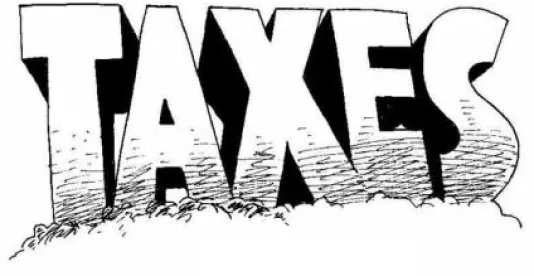Revenue Procedure 2016-44 is laudable because it significantly expands the scope of management contracts that can satisfy the safe harbor from private business use of facilities financed with proceeds of tax-advantaged bonds. It also makes much more feasible the use of tax-advantaged bonds in public-private partnership arrangements. Revenue Procedure 2016-44 does, however, effect one curious change of uncertain implication from its predecessor, Revenue Procedure 97-13.
The management contract safe harbors set forth in Revenue Procedure 97-13 provide that the reimbursement by the “qualified user”[1] of direct expenses paid by the manager to unrelated parties is not treated as compensation of the manager under the management contract. Consequently, such expense reimbursement is not taken into account in determining whether the management contract satisfies a Revenue Procedure 97-13 safe harbor from private business use. The Internal Revenue Service held in Private Letter Ruling 200222006 (Feb. 19, 2002) and Private Letter Ruling 201145005 (Aug. 4, 2011) that the payment of compensation by the manager to its non-executive employees (in the case of the former private letter ruling) and to its employees that do not have an ownership interest in the manager entity (in the case of the latter ruling) was the payment of direct expenses to unrelated parties, the reimbursement of which would not be considered compensation under Revenue Procedure 97-13.
Revenue Procedure 2016-44 changes this result. The reasons for, and implications of, this change are not immediately evident.
Under Revenue Procedure 2016-44, a manager is treated as receiving compensation from the qualified user if the qualified user reimburses the actual and direct expenses (and related administrative overhead expenses) paid by the manager. Revenue Procedure 2016-44 further provides that the reimbursement of actual and direct expenses paid by the manager to unrelated parties is disregarded as compensation for purposes of determining whether the management contract attempts an impermissible sharing of net profits of the bond-financed facility through the payment of compensation that takes into account both the revenues and expenses of the managed facility. However, in direct contrast to Revenue Procedure 97-13, as interpreted by Private Letter Rulings 200222006 and 201145005, Revenue Procedure 2016-44 expressly provides that an employee of the manager is not an unrelated party to the manager.
If the reimbursement of the manager’s employee compensation expenses constitutes compensation under the management contract, does this mean that in the not-uncommon arrangement where a manager receives a percentage of the managed facility’s gross revenues and is reimbursed for its employee expenses the manager obtains a share of the net profits of the managed facility, which would result in private business use of the tax-advantaged bonds that financed the managed facility? This would be a bizarre result, as illustrated by the following examples.
Assume that a manager contracts with a qualified user to provide counseling services in the qualified user’s tax-advantaged bond-financed facility. Assume further that (i) employee compensation is the sole variable expense of the managed facility, (ii) the manager is paid 100% of the facility’s gross revenues and is reimbursed for the compensation it pays its employees, and (iii) the management contract otherwise satisfies the elements of Revenue Procedure 2016-44. Under this arrangement, the manager ultimately realizes only the gross revenues, not the net profit or loss, of the managed facility. If gross revenues in a given year are $1,000,000 and the compensation paid to the manager’s employees is $500,000, the manager realizes only the $1,000,000 of gross revenues, because the $500,000 of employee compensation expense reimbursement offsets the amounts paid by the manager to its employees. The same is true if the gross revenues of the managed facility are $1,000,000 and the compensation paid to the manager’s employees is $1,500,000 – the reimbursement of the manager’s employee compensation expense leaves the manager with the gross revenues of the managed facility and with no portion of the $500,000 loss.
Now let’s assume that we are dealing with the same management contract, except that the qualified user does not reimburse the manager for the manager’s employee compensation expenses. This agreement at least facially complies with Revenue Procedure 2016-44, because the only element of compensation paid to the manager is the gross revenues of the managed facility. Unlike the arrangement where the qualified user reimburses the manager’s employee compensation expenses, however, the lack of such reimbursement causes the manager ultimately to realize something other than the gross revenues of the managed facility. Where the gross revenues of the facility exceed the manager’s employee compensation expenses, the manager is left with the surplus (which will by definition be less than the facility’s gross revenues), and where the manager’s employee compensation expenses exceed the facility’s gross revenues, the manager will bear the loss.
This is not to say that a management contract results in the impermissible sharing of net profits and losses of the managed facility where the manager is paid a percentage of the facility’s gross revenues and is not reimbursed for its employee compensation expenses. This is instead meant to highlight the absurdity of a literal application of Revenue Procedure 2016-44 where the manager is paid a percentage of the gross revenues of the managed facility and is reimbursed for its employee compensation expenses. In such a case, the manager ultimately receives only its percentage of the gross revenues, and the cost of operating the managed facility (in other words, the entrepreneurial risk associated with the facility) remains where it should – with the qualified user.
To avoid unwarranted confusion, the IRS should amend Revenue Procedure 2016-44 so that it accords with Revenue Procedure 97-13, as interpreted by Private Letter Rulings 200222006 and 201145005, to make clear that the reimbursement of a manager’s direct and actual employee compensation expense is disregarded as compensation in determining whether the manager and qualified user have entered into an arrangement to share the net profits and losses of the tax-advantaged bond-financed facility.
[1] A qualified user of tax-advantaged bond-financed facilities is any state or local governmental unit or instrumentality thereof, and, in the case of qualified 501(c)(3) bonds, a 501(c)(3) organization if the bond-financed property is not used in an unrelated trade or business of such an organization.




 />i
/>i


